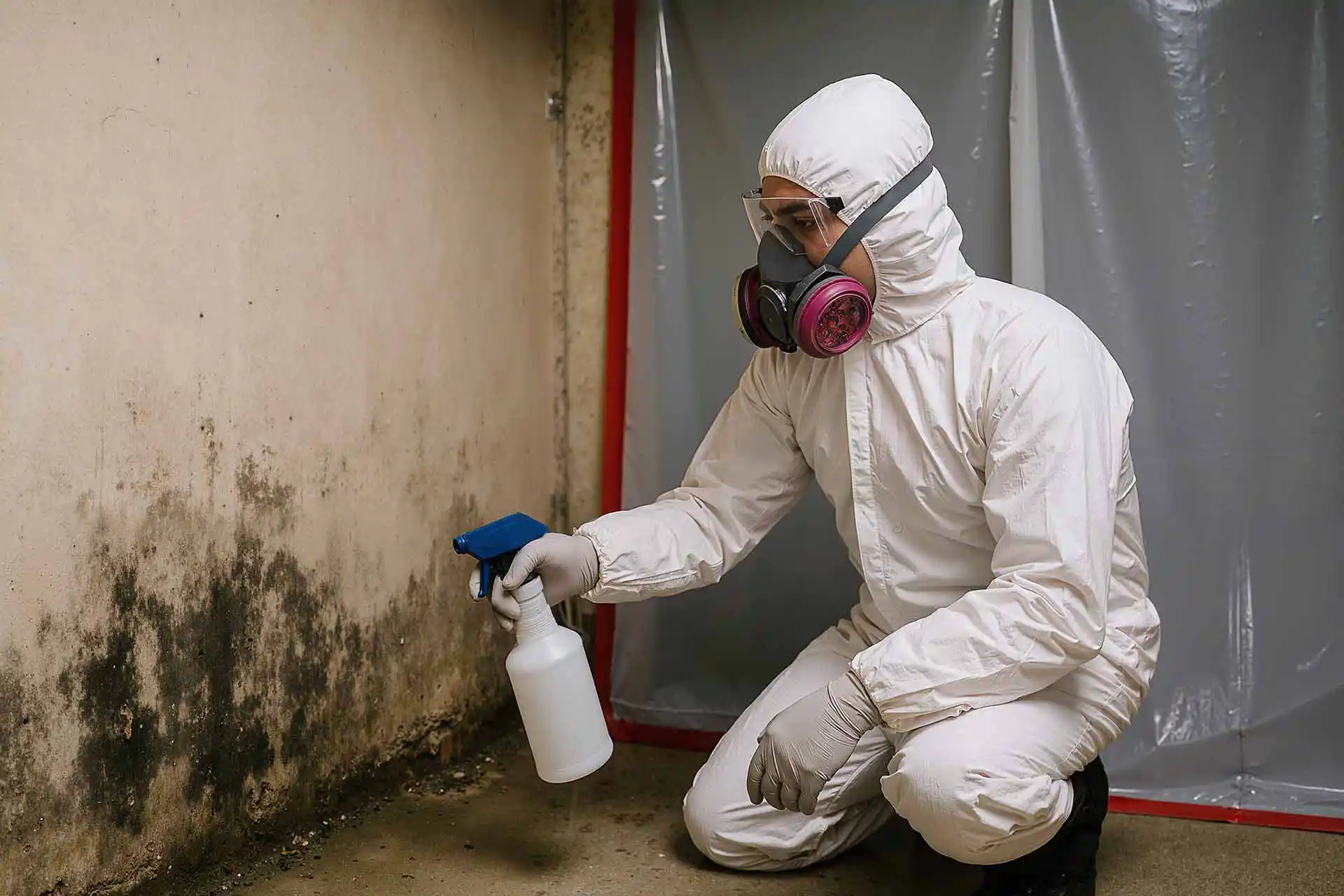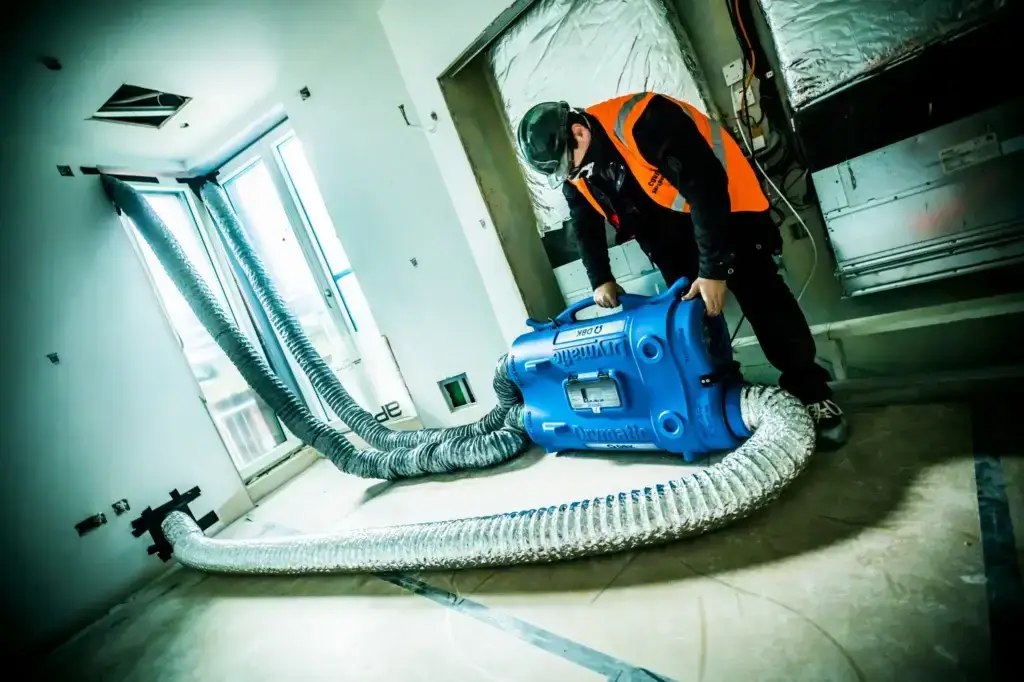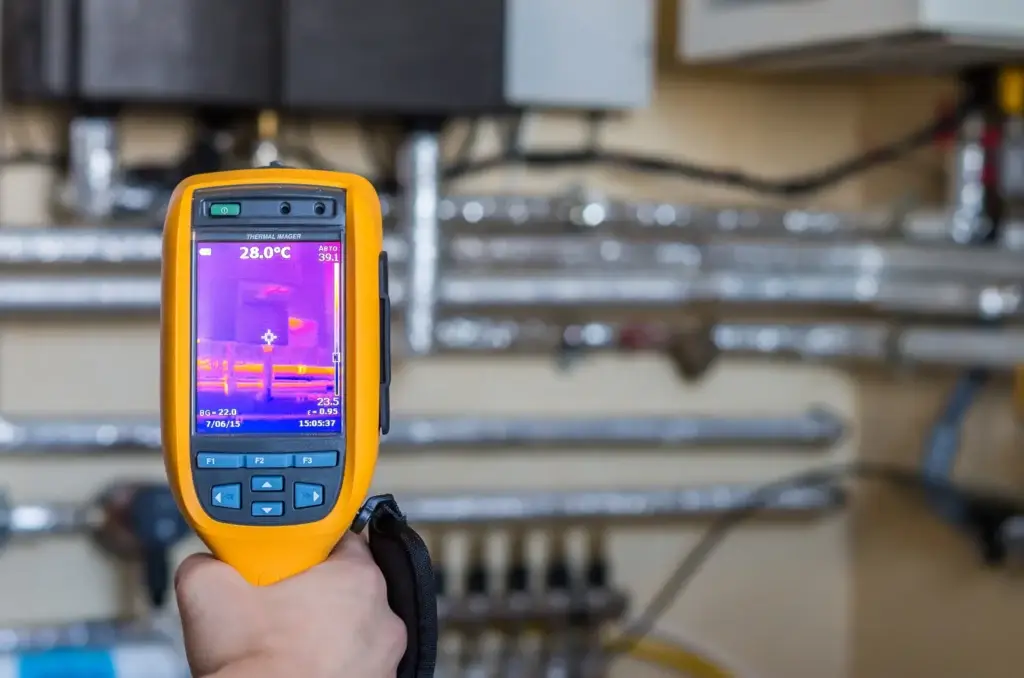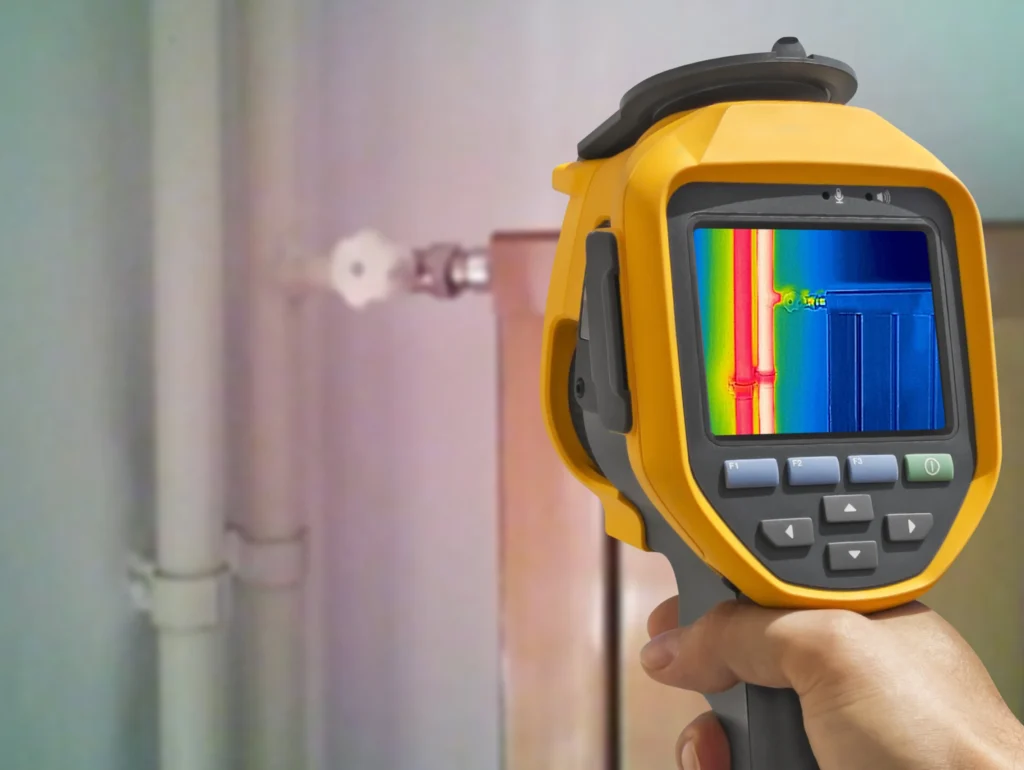Water bills got you stressed? You’re not alone. We’ve all been there, scratching our heads and wondering, “Why is my water bill so high?!” While it’s easy to blame a longer shower or a few extra loads of washing, there’s a sneaky culprit that could be draining your bank account: a hidden water leak. And trust us, it’s a bigger problem than just an expensive bill.
A constantly rising water bill is a frustrating mystery. It’s bad for your wallet and, as we’ll see, it could be a warning sign of something much worse. In this post, we’re going to get to the bottom of this mystery. We’ll explore the common reasons your water bill is climbing and shine a spotlight on the signs of a hidden leak. By the end, you’ll be armed with the knowledge to protect your home and your budget.
Skip to:
The undiscovered water leak
3 key signs of a hidden water leak
Why you can’t afford to ignore a water leak
How the experts find a hidden water leak
Is it just me, or am I using more water?
When you see a spike in your bill, the first thought is usually, “Am I just using more water?” Sometimes, the answer is yes. It could be due to:
- More people in the house: A new roommate or a long-term guest can quickly increase your water consumption.
- Lifestyle changes: Taking longer showers, running the tap while brushing your teeth, or doing more frequent laundry all add up.
- Seasonal changes: Cold weather can cause you to run the tap longer to get hot water. Even a dripping tap or a constantly running toilet can contribute significantly over a month.
These are all reasonable explanations. But what if you haven’t changed your habits at all?
The silent culprit: The undiscovered water leak
Here’s where things get serious. If you can’t account for the extra water usage, there’s a high probability you have a hidden water leak. It might sound insignificant, just a drip here and there, but those tiny drops can lead to a massive problem. According to a 2023 report by Affinity Water, a staggering 68% of UK households have experienced a water leak. Together, these leaks cost homeowners around £697 million a year in wasted water!
Beyond the financial hit, ignoring a hidden leak can lead to:
- Expensive property damage: Water can ruin drywall, floors, and foundations.
- Mould growth: The constant moisture creates the perfect environment for mould, which can cause serious health issues.
- Lower water pressure: A leak can reduce the water pressure throughout your home, making showers and taps a lot less enjoyable.
3 key signs of a hidden water leak
Think your bill is the only sign? Think again. Your home might be trying to tell you something. Keep an eye out for these three tell-tale signs:
That mysterious rising water bill
This is the most obvious sign. A small, constant leak means your water meter is always running, even when you aren’t actively using water. A single drip every five seconds can waste over 130 litres of water a month! That adds up fast.
Patches of dampness
This is a classic indicator. Water travels, and a leak behind a wall or under a floor can create a damp patch that grows over time. It might start as a small, discoloured spot but can quickly become a much bigger, more obvious stain.
A sudden drop in water pressure
Have your showers and taps lost their oomph? A sudden decrease in water pressure is a huge red flag. A leak in your plumbing system allows water to escape, reducing the volume and pressure available to the rest of your home.
If you spot one or more of these signs, don’t wait. The best course of action is to call a professional leak detection service.
Why you can’t afford to ignore a water leak
The cost of fixing a hidden water leak is almost always less than the cost of the damage it will eventually cause. The secondary damage, from structural issues to mould growth, can be far more expensive and time-consuming to repair.
Property damage
An untreated leak can cause significant structural damage. This isn’t a quick fix; it’s a major restoration project. When water is left to saturate an area, it can weaken key components of your home, like wooden support beams, floor joists, and even the foundation. This can lead to serious issues like sagging ceilings, warped floors, and crumbling drywall. A small leak could turn into a full-scale restoration project costing anywhere from £700 to £4,500 in the UK, depending on the severity and extent of the damage. Waiting for the problem to become obvious can mean the difference between a simple repair and a complete rebuild of a section of your home.
Mould
Mould requires moisture, organic material (like wood, paper, and drywall), and a suitable temperature. A hidden leak provides the perfect environment for it to thrive. Beyond the unsightly mess, mould is a Category 1 health risk, potentially causing respiratory issues, allergies, and infections. Spores released by mould can trigger allergic reactions in otherwise healthy people, and they pose an even greater risk to children, the elderly, and those with respiratory conditions like asthma. Removing mould professionally can be an additional significant expense, with costs for a full-property treatment ranging from £500 to over £2,000, on top of the repairs for the leak itself.
Simply put, acting fast will save you money, time, and stress, protecting both your property and your family’s health.
Discover how leak detection helped to resolve why standing water was found in the basement of a multi-tenanted, 1900s building.

How the experts find a hidden water leak
Finding a leak isn’t as simple as following the water. Many hidden leaks require specialised equipment to locate accurately without tearing up your home. Professional leak detection experts use a range of cutting-edge tools to pinpoint the exact source of the problem.
Moisture meters
These devices measure the moisture content of a surface. High readings can indicate a nearby leak, helping technicians narrow down the search area.
Thermal imaging cameras
These cameras don’t see water; they see temperature changes. Escaping water is often a different temperature than the surrounding materials, allowing the camera to create a “map” of the leak’s location.
Acoustic leak detectors
This is some next-level technology. These sensitive devices listen for the faint sound of water escaping from a pipe. By amplifying the sound, a technician can pinpoint the precise location of the leak.
Tracer gas testing
This method is highly effective for hard-to-find leaks. A harmless, non-toxic tracer gas (usually a mixture of hydrogen and nitrogen) is pumped into the pipe. The gas escapes through the leak, and a highly sensitive sniffer device is used to detect the exact point where it exits the ground or a wall. This is a non-invasive way to find even the smallest leaks.
Endoscopic cameras
For a direct visual inspection, a flexible, waterproof endoscopic camera can be fed into pipes through a small entry point. The camera’s live feed allows the technician to visually inspect the inside of the pipes, identifying any cracks, blockages, or breaks that are causing the leak. This method is particularly useful for leaks in hard-to-reach or enclosed spaces.
Pressure testing
This is a fundamental step for diagnosing leaks. The section of pipework in question is isolated and then pressurised with either air or water. If the pressure drops, it confirms there’s a leak. This test doesn’t pinpoint the exact location, but it confirms a leak exists and helps the technician narrow down which part of the system is affected before using more specific detection tools.
Learn more about the tools used in leak detection by reading How leak detection works: Tools and techniques explained
Don’t let a hidden leak wreak havoc on your home
If you suspect you have an undetected water leak, the best thing you can do is get help immediately. Instead of waiting for the problem to get worse, take control. A professional leak detection service can save you from costly repairs and future headaches.
Need to speak to a specialist urgently? Call 01622 926 505
Frequently asked questions about water leaks
Why is my water bill suddenly so high in the UK?
If your water bill is suddenly high without a noticeable increase in usage (e.g., more occupants, new appliances, or extensive garden watering), the most common reason is a hidden water leak. Even small leaks can waste significant amounts of water, leading to a substantial and unexplained rise in your bills.
What are the common signs of a hidden water leak in my home?
Common signs of a hidden water leak include a consistently rising water bill with no changes in usage, unexplained damp patches on walls, ceilings, or floors that grow over time, and a sudden drop in water pressure at taps or showers. You might also hear the sound of running water when all taps are off, or notice a musty smell.
How do professionals detect hidden water leaks?
Professional leak detection services use specialised, non-invasive technology to pinpoint hidden leaks. These tools include moisture meters to identify damp areas, thermal imaging cameras to detect temperature changes caused by escaping water, and acoustic leak detectors that amplify the faint sounds of water escaping pipes to locate the exact source without destructive methods.
What are the risks or consequences of ignoring a hidden water leak?
Ignoring a hidden water leak can lead to severe consequences, including significant water waste and higher bills, extensive property damage (e.g., rotting timber, damaged plasterboard, warped flooring), and hazardous mould growth, which poses serious health risks, particularly respiratory problems and allergies. The long-term financial and health costs far outweigh the cost of early detection and repair.
How much can a hidden water leak cost a UK household annually?
A hidden water leak can cost a UK household hundreds of pounds annually in wasted water and inflated bills. A 2023 report cited in the article indicates that UK households experience an annual cost of around £697 million collectively due to water leaks, highlighting the substantial financial impact of even small, undetected leaks.
Can a small water leak cause mould growth in a property?
Yes, even a small water leak can cause significant mould growth in a property. Mould thrives in damp conditions, and the continuous moisture from a leak creates an ideal environment for it to rapidly spread on organic materials found in walls, ceilings, and flooring, posing health risks and requiring extensive remediation.
When should I call a professional for a suspected water leak?
You should call a professional for a suspected water leak if you notice a sudden increase in your water bill without an explanation, if you find damp patches that persist or grow, experience a drop in water pressure, or if you’ve performed basic checks (like a meter test) that indicate a hidden leak. Professional services ensure accurate detection and prevent further damage.

Dave Knight - Leak Detection Technical Manager
With over 26 years' experience in property damage restoration, our Leak Detection Technical Manager is a seasoned expert. He brings a specialised focus of 21 years in leak detection and trace & access claims, including 10 years as the owner of a specialist leak detection company. He uses advanced, non-invasive technology to find leaks with minimal disruption in both domestic and commercial settings. His extensive water leak detection qualifications, including WRAS and BDMA, and his experience leading projects across the UK and Europe, highlight his expertise.





















